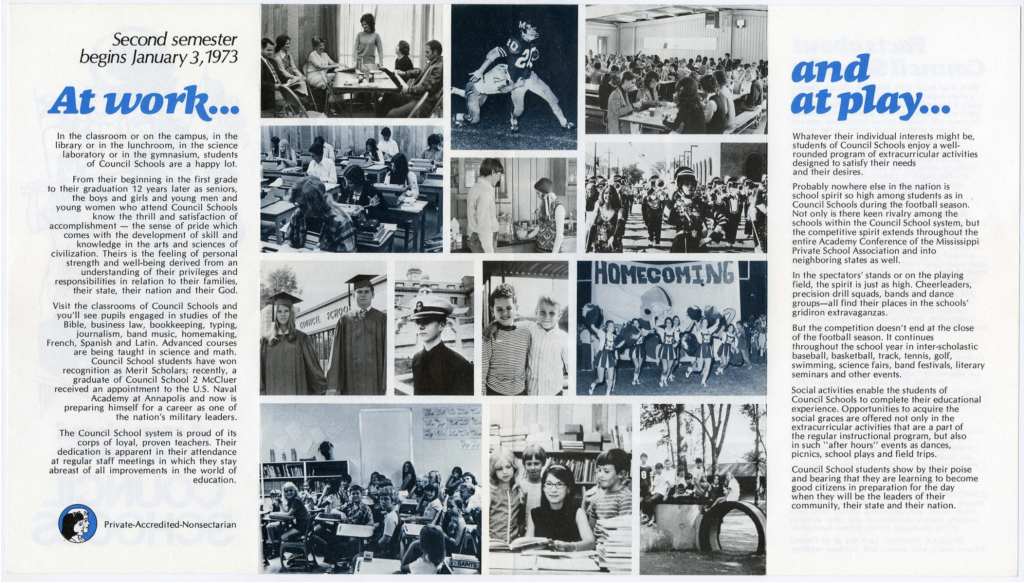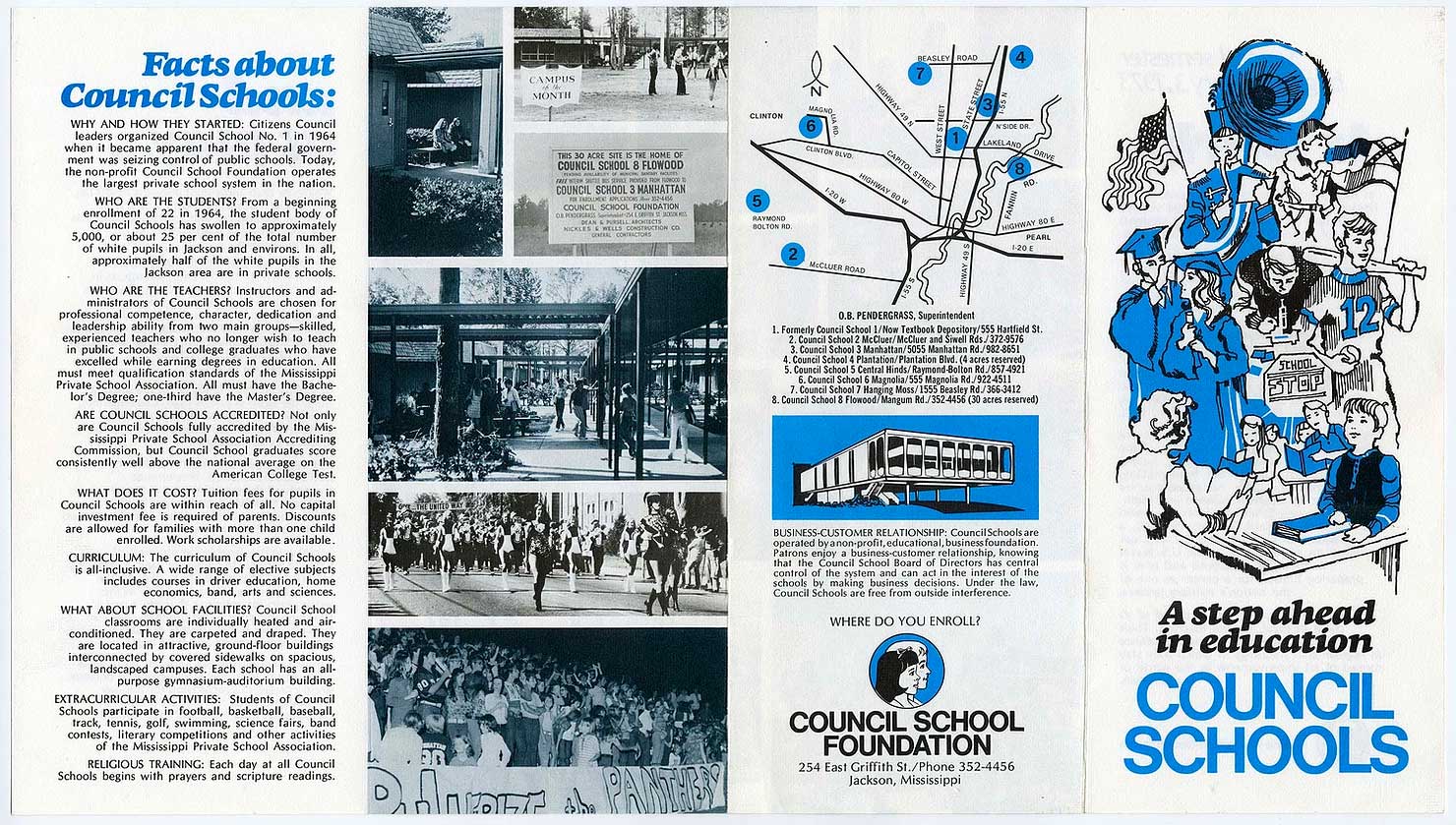By Alan Huffman Council Manhattan (Jackson, Mississippi) Tenth grade in 1970-1971
She stood out in the crowded anteroom of Peoples Funeral Home, like an apparition from my middle school 50 years before. My memory of Ms. Sweet was of a tall, dark-skinned woman with shoulder-length, pomaded hair who, in the white parlance of the time, had an attitude. By this point, I assumed she had long since made the crossing to what antiquated obits called the limitless uncertainty of eternity. Yet there, in the crowded anteroom, she once again seemed to be.
When I met Ms. Sweet in 1970, she was a veteran public-school teacher in Jackson, Mississippi who had been transferred to my formerly all-white Chastain Junior High following federal court-ordered integration, which is where she made her mark on my young, unwoke self. Prior to that, my interactions with black women had been limited to maids, including the one I knew best, Helen, who worked for my family throughout my childhood and, as my mother would later wince to tell, always obligingly fell to the floor when I shot her with my toy pistol. Notably, I don’t know Helen’s last name. Ms. Sweet, by contrast, immediately saw me as a self-entitled white boy and earned my very grudging respect by summarily putting me in my place. Ours was a challenging relationship, and it marked the beginning of a key sequence of my education.
I was at People’s that day for the funeral of a classmate with whom I’d graduated from high school in 1973, and so, was already in way-back mode. Driving to the funeral home, I had passed through the largely abandoned neighborhood of shotgun houses where Helen once lived. Today, Jackson’s population, its tax base, its services and schools are all in decline, and in some ways it is less integrated than it was decades ago. Peoples was still the go-to black funeral home, though directly across the street was the burned-out ruin of a building and few blocks away, the empty shell of the formerly preeminent white funeral home testified to tandem demographic failure. Chastain is now basically all-black, as is Murrah High School, where I graduated. In 2019, white and black kids of means typically live in outlying suburbs or attend private schools.
I sometimes hear white southerners mention, somewhat sheepishly, that they attended private schools but didn’t realize at the time that they were, you know, seg academies. For too many white kids, they were just school.
This seems a bit disingenuous, to say the least, though as someone who spent a year at an academy operated by the supremely racist Citizens Council, I admit that I afterward felt the need to downplay the fact. My explanation was that I went to Council Manhattan because it was air conditioned and you could drink Cokes, which was basically true, though it was also true that I had transferred there the year after integration, which in 1970 transformed Chastain from 99 percent white to 60 percent black, overnight. That is when Ms. Sweet entered the picture for me and unwittingly influenced my decision to attend private school.
Integration at Chastain wasn’t as tumultuous as many had expected, but after having enjoyed better textbooks, better equipped schools and more consistently educated teachers, white students like me were less than thrilled to be forced to sample the inferior system from across the tracks. Some of our new black teachers, like Ms. Sweet, were unexpectedly brilliant, but others were astonishingly uneducated. For reasons that are well known, most of the wealthy white kids soon decamped to Jackson Prep, which had been formed for the purpose, while others transferred to the newly-opened, scholastically inferior Citizens Council schools. Not everyone left because they were racist; as I later found, Ms. Sweet’s own kids attended a private parochial school at the time. In any event, I stuck it out at Chastain for the remainder of the year, but when my best friend said he was going to Council Manhattan the next fall, I convinced my parents to let me go there, too. My parents were typical white Mississippians at the time, which is to say they forbade us to say “nigger” or to disrespect anyone, of any race, but didn’t really understand why separate but equal was now considered such a bad idea. They scraped together the money for my tuition and thought no more of it until they got a phone call from a man named Bill Simmons midway through the school year.
Council Manhattan had been thrown together hurriedly to capture its share of white students fleeing public schools, and its mix of brilliant and horrible teachers was, if anything, more pronounced than post-integration Chastain’s had been. Anyone, it seemed, could get a job teaching in one of its pre-fab classrooms, including a woman who admonished us for acting up in class by saying, “Y’all should be grateful – if it weren’t for teachers like me, y’all would be going to school with niggers.” Here was an early clue that my choice of schools involved something more than air conditioning, Cokes and the bad grammar of an undereducated English teacher. Thus alerted, I began to receive further notices, climaxing with the series of episodes that led to the phone call from Mr. Simmons.
Because Council Manhattan students were assigned an hour-long physical education class each day, yet had no access to a gym, we ended up in study hall in the portable building that housed the library. Meanwhile, my driver’s ed class involved a few weeks of instruction and a couple of days behind the wheel, after which I was again assigned to study hall. This meant I spent two and a half straight hours in said library, and I’m here to tell you, whatever prejudicial imaginings you may have of the library of a white supremacist academy in Jackson, Mississippi in 1970 are likely spot-on. During my long stints there, I probed every aisle in search of something, anything, to entertain myself, and at some point, stumbled upon a cache of what was known as Citizen magazines, which were mimeographed, stapled booklets published by the Citizens Council as a sort of periodically updated treatise on white supremacy. I was at first intrigued, then disturbed, and finally provoked by the Citizen, which covered topics such as scientific proof of the mental inferiority of Negroes, Biblical support for white dominance and I don’t know what all else — everything you could think of from the white supremacist franchise.

As I read the articles, my initial response was mild revulsion, but I soon found myself assuming a protective posture toward, specifically, Helen, to whom nothing I read in the Citizen applied. Say what you will about the relationships of entitled whites to indentured blacks and whether there was anything like love between them, but Helen was my starting point. Eventually, I had to logically conclude that the same ugly claims likewise did not apply to the less lovable Ms. Sweet, who, despite her intelligence, I had been happy to leave behind. Clearly, there were worse things in the world than imperious black biology teachers and English educators who butchered the language. There were true monsters, and I had to face the fact that I was happily dwelling within their lair. Mind you, I was also raised a Baptist, so I was quick to judge. Armed with these unexpected revelations, I began to question everything, and eventually felt compelled to act. Because I was 15 and a young Turk, I took it upon myself to pen long, laden rebuttals to the Citizen articles, which I then mailed to the head of the Citizens Council, the aforementioned Mr. Simmons. Also, for some reason, I stole the library’s entire collection of Citizen magazines, one at a time, and hid them in my bedroom closet. I don’t know why I did that, honestly, whether it was to take them out of circulation or because I never could take my eyes off a car wreck, but unfortunately, I eventually threw them all away.
My letter-writing campaign came at the tail end of the civil rights era, which is to say at a time when white supremacists were feeling cornered and therefore even more hostile to dissent. For Mr. Simmons, the presence of someone like me at one of the Citizens Council’s own schools was outrageous and required intervention, so he called my father in for a meeting and explained the nature of my letters, which he said were evidence of possible mental disorder, because why else would a white boy say such things to him? My father asked to see one of the letters, and I assume the one Mr. Simmons selected was, in his view, the most offensive, which my father read in silence, then announced, “Well, I pretty much agree with everything he says.” According to my father’s later telling, Mr. Simmons was visibly stunned, and soon after, the decision was made that it was time for Alan to go back to public school. And so, I did. I graduated from Murrah, where I made friends of both races that I treasure to this day, though for a long time I tried to gloss over the retroactive embarrassment of my year at Council school. Also suppressed was the fact that as a child I had emerged from a Saturday matinee of Gone With the Wind thinking it might be nice to own slaves.
All of this came flooding back during the funeral, after which I spotted the seeming Ms. Sweet. The resemblance was uncanny, and when I asked a friend if he knew who she was, he said, “Her? That’s Ms. Sweet.” The way he said it implied that everyone else knew who she was, like, “That’s Beyonce,” or, “That’s Cher.” I was shocked to find that she was not only still living but had somehow not changed, which was extremely, oddly comforting to me. I crossed the room to her and said, “Ms. Sweet, I don’t expect you to remember me, but my name is Alan, and you taught me biology at Chastain in 1970, and you made a very big impression on me.” I could see her sizing me up, just like she had back in the day.
“Help me here,” she said. “Remind me who you were.”
It seemed weird to explain that I was the white boy who’d had the temerity to talk down to her, and who had left the next year for Council school, in part because I didn’t like having a black woman talk down to me. We were in a crowded room at a funeral, after all. So, I said, “Oh, I was a random 14-year-old. I just wanted to tell you you were a great teacher, and you made a lasting impression on me.” She leveled her gaze in a way that made me think she was starting to remember who I was, then began asking about other students in my class. She had an amazing memory for someone her age. Though part of the reason I had temporarily left public schools was my discomfort with people like her, she was also part of the reason I had returned. The truth is where you find it, and I had certainly found a piece of it in her class, yet I had found another piece of it at that godforsaken Citizens Council school.
Alan Huffman is a freelance writer and the author of five nonfiction books: Ten Point, Mississippi in Africa, Sultana, We’re With Nobody and Here I Am. His website is www.alanhuffmancom
